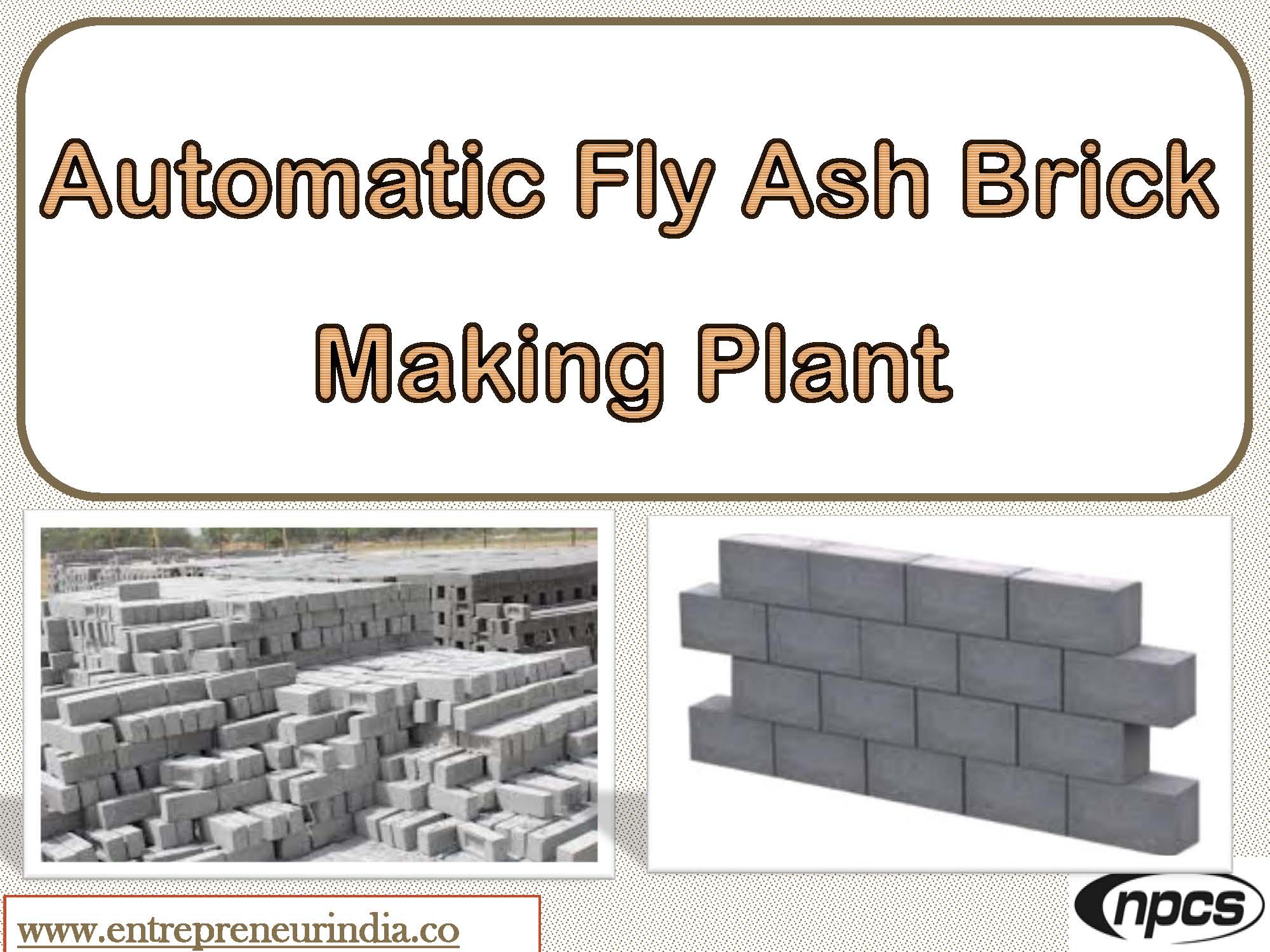
India’s construction industry is shifting toward sustainable and cost-effective building materials, and one of the most significant innovations in this space is the automatic fly ash brick making plant. Fly ash bricks are made using the waste byproduct of thermal power plants, making them eco-friendly, durable, and cheaper than traditional clay bricks. As the government pushes for sustainable infrastructure and bans on red brick kilns increase, the demand for fly ash bricks is growing rapidly. Moreover, automation in the manufacturing process ensures high-quality, uniform bricks with minimal labor and faster production cycles—making it an ideal business for forward-thinking entrepreneurs.
Setting Up an Automatic Fly Ash Brick Making Plant
Establishing a fully automatic plant involves detailed planning, investment in high-efficiency machinery, and a clear understanding of the raw material supply chain. This section outlines all the essential components of setting up and running a successful fly ash brick plant.
1. Benefits and Market Demand
Fly ash bricks are not only eco-friendly but also structurally stronger and lighter than conventional bricks. They are resistant to water, fire, and pests, making them ideal for all types of construction—residential, commercial, and industrial. In contrast to manually produced bricks, those made from an automatic fly ash brick making plant offer precise dimensions, which reduces plaster and mortar use. Moreover, increasing real estate projects, smart city missions, and green building certifications have created high demand across both rural and urban markets.
2. Raw Materials and Brick Composition
The main ingredients required include:
-
Fly ash – waste material from coal-based power plants
-
Cement or lime – used as a binding agent
-
Sand or stone dust – adds volume and strength
-
Gypsum – helps in setting time and strength development
-
Water – essential for mixing
These materials are mixed in exact ratios and pressed into molds using hydraulic pressure. Moreover, bricks are cured for 7–14 days to achieve desired strength without the need for kiln burning, making the entire process energy-efficient and eco-conscious.
See More –Razor Blade Manufacturing Company
3. Machinery and Plant Setup
An automatic fly ash brick making plant typically includes:
-
Fully automatic brick press machine (with hydraulic system)
-
Pan mixer or concrete mixer
-
Conveyor belts
-
Batching and feeding system
-
Brick stacking system
-
Control panel (PLC-based for automation)
-
Curing racks or chambers
A medium-capacity plant can produce 10,000–20,000 bricks per shift and requires an investment of ?25–40 lakhs. Higher-capacity units may cost ?75 lakhs and above. Moreover, you’ll need 10,000–20,000 sq. ft. of land for the plant, raw material storage, and curing area.
4. Legal Requirements and Profitability
To start your plant, you must register under:
-
Udyam/MSME Registration
-
GST Registration
-
Pollution Control Board Clearance
-
Factory License (if required based on production scale)
Additionally, BIS certification (IS 12894) helps ensure your bricks meet construction standards. The profit margin in this business is attractive due to low raw material costs and consistent market demand. Moreover, subsidies under government schemes like PMEGP or Mudra loans can reduce your initial financial burden. Selling directly to builders, government contractors, and retail suppliers ensures a steady customer base.
See More – Mustard Oil Mill
Conclusion
Launching an automatic fly ash brick making plant offers entrepreneurs a modern and sustainable entry into the booming construction industry. With rising demand for green building materials, government support, and low production costs, this business model promises excellent long-term returns. Moreover, automation not only ensures high-quality output but also minimizes labor dependency—helping you scale quickly and efficiently. With the right setup and strategy, this venture can position you as a key player in India’s transition to sustainable construction.





